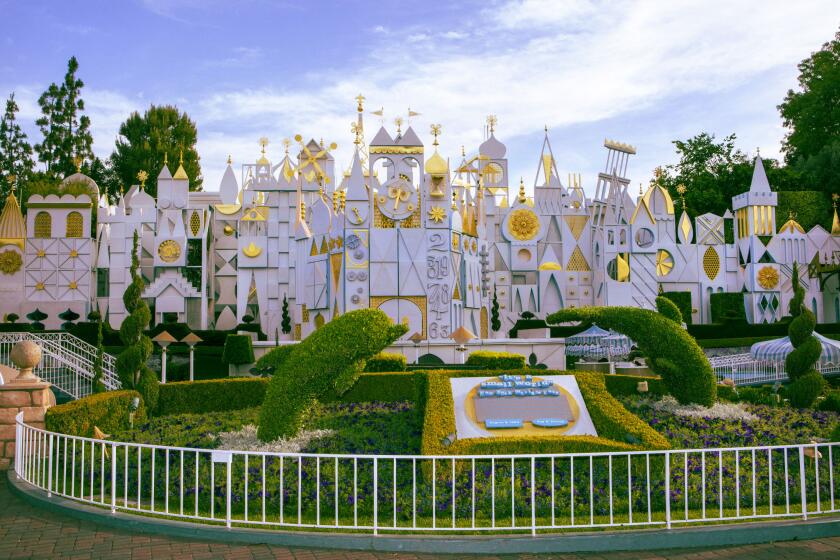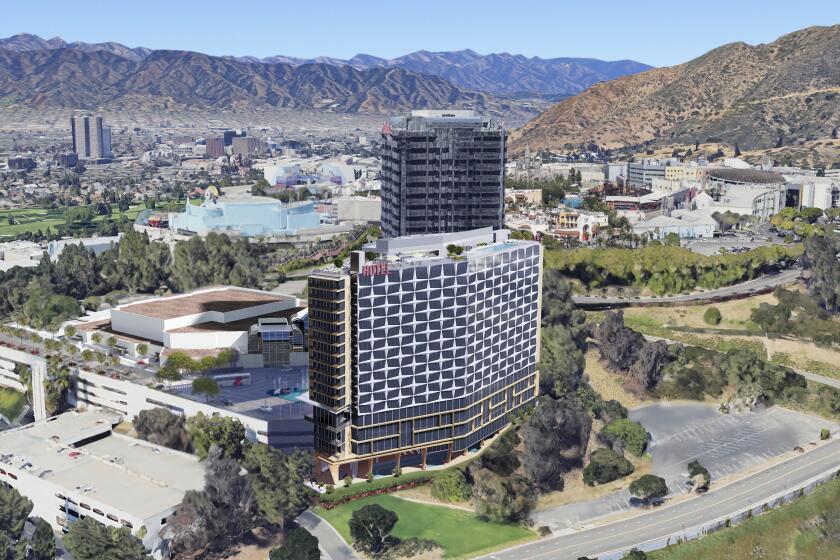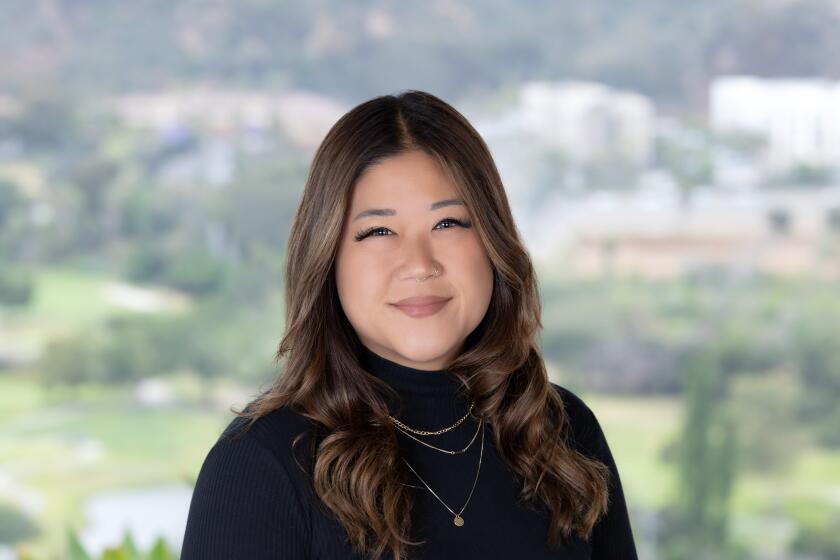Growth strains Jewish community
- Share via
On most weekdays, young boys in yarmulkes can be seen hanging out with friends in front of the new kosher Subway sandwich shop, while Orthodox women in modest dress stroll past Judaica stores and synagogues along Pico Boulevard in West Los Angeles.
Dubbed the “Kosher District” by some planners, this roughly 12-block stretch near Robertson Boulevard has exploded in recent years with restaurants, shops and religious institutions aimed at serving the neighborhood’s growing Jewish population.
But the project has sparked protests among Westside residents weary of increasing traffic and overcrowding in an already bustling neighborhood. Similar battles have erupted in Santa Monica and Beverly Hills as the area struggles with more growth.
Neighbors are threatening legal action against Chabad, an Orthodox Jewish outreach organization, over its proposal to construct a new girls school, condos, a ritual bathhouse and retail stores on the boulevard between Wetherly and Crest drives.
Rabbi Boruch Shlomo Cunin, the head of Chabad of California, said his group has been battling neighborhood opposition in one form or another across the region for the last 40 years. These days that opposition includes some of its Jewish neighbors.
“Oy vey, oy vey, is what they say,” said Cunin, describing residents’ concerns with a common Yiddish expression. “That’s the song.”
Earlier this year, a Chabad preschool in Pacific Palisades was forced to move from its location at Temescal Gateway Park after complaints from neighbors and the Santa Monica Mountain Conservancy.
In Brentwood, a Chabad house is being constructed on Bundy Drive off San Vicente Boulevard despite concerns in the residential neighborhood that it will ultimately be used as a house of worship, violating zoning regulations and inviting a constant stream of visitors.
A development project in Valley Village north of Studio City has met with stiff opposition from neighbors over the height of the project and inadequate parking. And on Pico Boulevard in West Los Angeles, the Simon Wiesenthal Center has become embroiled in a dispute with neighbors over its expansion plans for the Museum of Tolerance, a Holocaust memorial.
All of the projects are in Westside or San Fernando Valley neighborhoods prone to overdevelopment, traffic and parking problems.
Lorrie Stone, a Pico Boulevard neighborhood spokeswoman who lives near the latest proposed Chabad project, thinks enough is enough.
“It’s like, give us a break; there’s no public transportation here, there’s no parking here, and now you just keep making it worse,” Stone said. “None of us are opposed to Chabad. . . . Chabad is a wonderful organization; they do unbelievable things. They just can’t do it all right here.”
For Cunin, plans for the massive residential and retail project on Pico Boulevard represent a key part of his grand vision for Chabad facilities in West Los Angeles. Chabad, whose Hebrew acronym stands for wisdom, understanding and knowledge, is a group that practices a form of Hasidic Judaism that emphasizes outreach to Jews. The organization was recently targeted by terrorists in Mumbai, and one of its rabbis and his wife were killed.
Chabad’s new Westside development, which would include a girls high school, would be built directly across the street from a recently completed elementary and middle school for girls.
The existing building is an imposing neo-Gothic brick structure and one reason why the design for its proposed sister building is more sleek and colorful. But Stone said the area is already overbuilt and residents worry about inadequate parking for another large structure.
“They have to park somewhere, and we know they’ll end up on our block, just like the other building,” she said.
City planners are reviewing the project. Stone and other neighborhood representatives argue that the development would require amending the area’s zoning regulations and threaten their quality of life.
“Maybe all of us who live on the Westside are feeling the same thing,” Stone said. “We understand it has to grow; we understand things have to be developed, but just not completely uncontrolled. And that’s exactly what every single one of these fights is about.”
On a recent weekday, dressed in a long, black coat, white shirt and black skullcap, Cunin stood in a conference room in the Bais Chaya Mushka School, completed about four years ago, and spoke proudly of Chabad’s accomplishments.
“We’re not dreamers, we’re doers,” he said. “Look what we’ve done.” He gestured at the new school building he stood in: three stories of sparkling hallways, airy classrooms, computer rooms with sleek flat-screens and a large gymnasium.
“You should have seen what this building looked like before,” Cunin said. “They were studying in closets . . . like broken down shanties.”
Plans for the new girls high school call for a 108,000-square-foot building on a parcel nearly one-fourth that size. The structure would stand 80 feet high -- almost twice the maximum 45-foot height allowed under current zoning -- with two levels of underground parking, with space for 71 vehicles instead of the required 168.
“There is no zoning in this city to accommodate an institution,” said Ben Reznik, an attorney for Chabad who has worked many land-use cases on the Westside. “If we had to build this school within limits of what the zoning was . . . you’d be literally squishing kids into small rooms. It would be a qualitative disaster.”
But Daniel Fink, a member of the neighborhood council’s board, said the new building “would just damage beyond repair the residential neighborhood immediately to the north.”
“If we don’t have nice places to live, the rest of it isn’t worth it,” he said.
The South Robertson Neighborhoods Council has held several meetings on the proposed development. In an August meeting, its board members voted unanimously against the project, but the city will make the final decision.
For now, city planners are working on a draft environmental impact report. Once they finish, the public will have a 45-day comment period.
--
More to Read
Sign up for Essential California
The most important California stories and recommendations in your inbox every morning.
You may occasionally receive promotional content from the Los Angeles Times.










